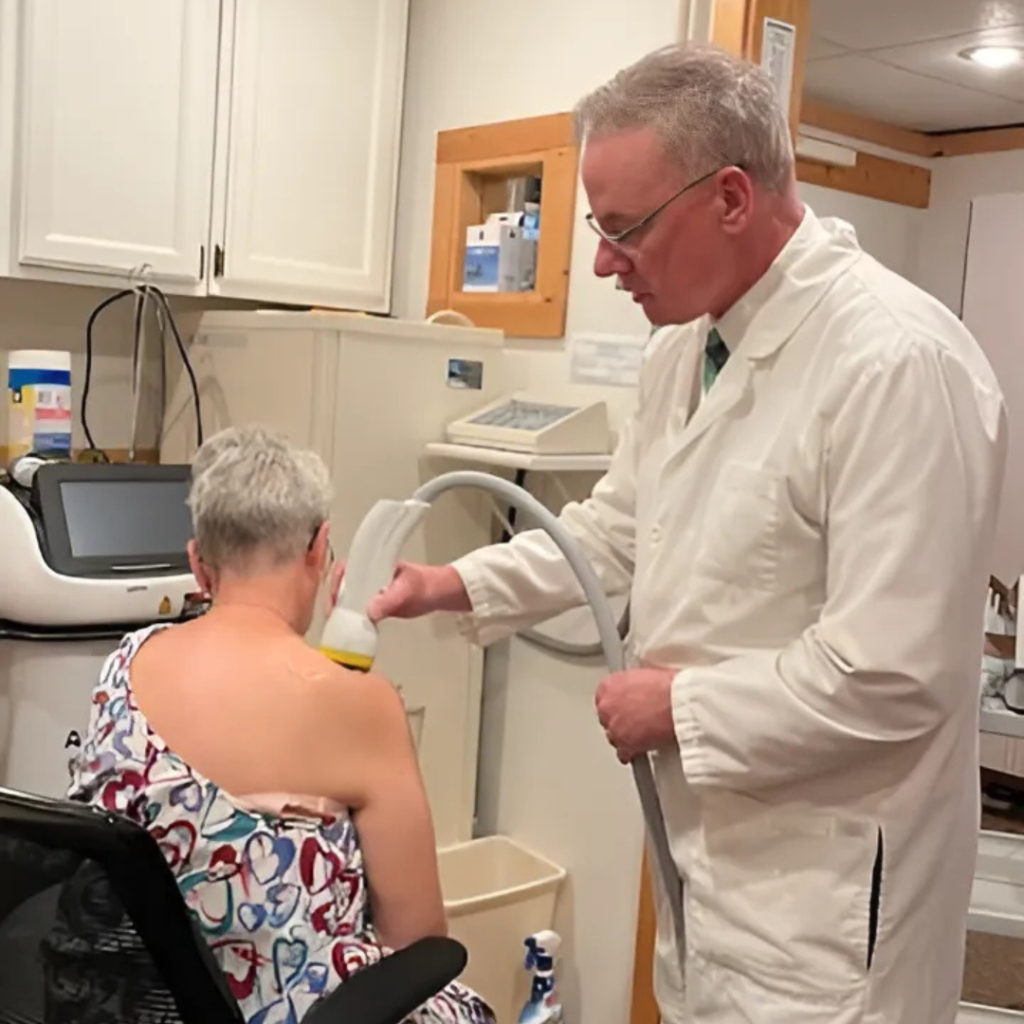Advancements in medical technology continue to shape how we approach health and wellness, and SoftWave Therapy stands out as a game-changer. This cutting-edge treatment harnesses acoustic wave technology to support the body’s natural healing processes, offering a non-invasive solution for pain relief, tissue repair, and improved mobility.
Whether you’re managing chronic discomfort, recovering from an injury, or exploring alternatives to traditional interventions, SoftWave Therapy represents a significant step forward in restorative care. Understanding how it works and why it’s gaining attention can help you decide if this innovative approach is right for you.
The Science Behind SoftWave Therapy
SoftWave Therapy is a groundbreaking approach that utilizes acoustic wave technology to enhance the body’s natural healing processes. At its core, this therapy relies on high-powered sound waves, known as shockwaves, to penetrate deep into tissues. These waves stimulate cellular activity by triggering mechanotransduction—a process where mechanical energy is converted into biochemical signals. This encourages the release of growth factors and cytokines, reducing inflammation and promoting tissue regeneration.
One of the therapy’s primary effects is improving blood flow through a process called angiogenesis, where new blood vessels form to deliver oxygen and nutrients to damaged areas. Additionally, it activates dormant stem cells, which travel to injury sites to aid in tissue repair and recovery. This combination of increased circulation, reduced inflammation, and cellular stimulation makes SoftWave Therapy effective in addressing conditions like chronic pain, tendon injuries, arthritis, and plantar fasciitis.
SoftWave Therapy’s non-invasive nature is a significant advantage. The treatment requires no surgery or anesthesia, involves minimal discomfort, and boasts little to no recovery time. Sessions are typically short, and many patients report noticeable improvements after just a few visits. For those seeking a drug-free, innovative solution, SoftWave Therapy offers a safe, efficient path to healing.
Related: Spinal Traction: Back-on-Trac Therapy for a Healthier Back and Spine
Key Benefits of SoftWave Therapy

SoftWave Therapy offers a range of benefits, making it a standout option for those seeking effective and non-invasive treatments. Here’s a look at its key advantages:
- Non-Invasive and Safe
SoftWave Therapy is completely non-invasive, meaning there are no needles, surgeries, or anesthesia involved. This minimizes risks and complications, making it a safe choice for patients. - Effective Pain Relief
The therapy provides immediate relief from pain by reducing inflammation and targeting the root cause of discomfort. Many patients report significant improvements after just one session. - Stimulates Tissue Regeneration
By activating dormant stem cells and promoting blood flow, SoftWave Therapy accelerates natural tissue repair and regeneration, helping with recovery from injuries. - Quick Recovery Time
Unlike surgical treatments, SoftWave Therapy requires little to no downtime. Patients can resume their daily activities almost immediately after treatment. - Versatile Applications
SoftWave Therapy effectively addresses a wide range of conditions, from chronic joint pain and tendon injuries to plantar fasciitis and neuropathy. - Long-Lasting Results
The biological changes initiated by SoftWave Therapy continue to promote healing for weeks, offering sustained improvements over time.
For those looking to avoid invasive procedures or long-term medications, SoftWave Therapy combines efficiency, safety, and lasting relief.
Related: How a Chiropractor Can Help You Live Pain-Free
SoftWave Therapy vs. Traditional Treatments
SoftWave Therapy offers a revolutionary approach that contrasts sharply with traditional treatments like medication, physical therapy, and surgery. Here’s how it compares:
- Non-Invasiveness
Unlike surgery, which involves incisions and anesthesia, SoftWave Therapy is completely non-invasive. This eliminates the risks of surgical complications and allows patients to avoid lengthy recovery periods. - Minimal Side Effects
Traditional treatments, such as pain medications, often come with side effects and the risk of dependency. SoftWave Therapy, by contrast, uses sound waves to heal tissues, offering a natural and safer alternative. - Enhanced Recovery Speed
While physical therapy can take months to show significant results, SoftWave Therapy accelerates healing through increased blood flow and cellular regeneration. Many patients report noticeable improvement within a few sessions. - Addresses Root Causes
Conventional methods like corticosteroid injections may focus on symptom management. SoftWave Therapy, however, stimulates tissue repair and regeneration, targeting the underlying causes of pain or injury. - Versatile Applications
SoftWave Therapy is effective across a range of conditions, from chronic pain and arthritis to sports injuries. Its adaptability makes it suitable for treating a variety of musculoskeletal issues.
For individuals seeking modern, drug-free, and efficient treatment options, SoftWave Therapy provides a compelling alternative to conventional methods.
Conditions Treated with SoftWave Therapy

SoftWave Therapy has proven to be effective for a wide range of medical conditions, making it a versatile treatment option. Here are some of the conditions it can help manage:
- Chronic Pain
Addresses long-lasting pain in areas such as the back, neck, and shoulders by reducing inflammation and promoting tissue repair. - Tendon and Ligament Injuries
Treats issues like tennis elbow, golfer’s elbow, and rotator cuff tears, aiding in faster tissue recovery. - Plantar Fasciitis and Heel Pain
Offers relief for plantar fasciitis by reducing inflammation and stimulating tissue regeneration in the heel and arch areas. - Arthritis and Joint Pain
Provides pain relief and improves mobility in patients suffering from conditions like knee arthritis or finger arthritis. - Disc and Spinal Issues
Effective for conditions such as disc bulge, herniation, sciatica, and pinched nerves, restoring functionality and reducing discomfort. - Carpal Tunnel Syndrome
Relieves symptoms like numbness and tingling in the hands by improving blood flow and nerve function. - Chronic Overuse Conditions
Treats repetitive strain injuries for athletes and professionals, including stress fractures and shin splints.
By targeting the root causes of these conditions, SoftWave Therapy delivers long-lasting relief through a non-invasive and safe method.
What to Expect During a SoftWave Therapy Session
Here’s a step-by-step guide on what happens during a typical SoftWave Therapy session:
- Initial Consultation
The process begins with a detailed consultation with your provider. They’ll review your medical history, discuss your symptoms, and identify areas that need treatment. This is also the time to ask any questions you might have and learn how SoftWave Therapy works. - Preparation for Treatment
You’ll be asked to lie comfortably on a treatment table. While no special clothing is required, wearing loose, comfortable attire is recommended. A layer of ultrasound gel is applied to the treatment area to enhance the conductivity of the sound waves. - Application of the Therapy
Your provider will use a handheld SoftWave device to deliver targeted acoustic waves to the affected area. The device is moved gently over the skin in circular motions. You may feel a pulsing or tapping sensation, which is typically comfortable but can be adjusted if needed. - Treatment Duration
Sessions typically last 10–20 minutes, depending on the severity and size of the treatment area. Patients often notice immediate benefits including reduced pain and improved mobility. - Post-Treatment Effects
After the session, you might experience mild redness or warmth, which subsides within hours. Some experience relief almost immediately, but multiple sessions may be needed for optimal results.
SoftWave Therapy offers a quick, non-invasive pathway to pain relief and tissue healing, tailored to your needs.
Who Can Benefit from SoftWave Therapy?
SoftWave Therapy is a versatile, non-invasive treatment that offers relief for various conditions and benefits diverse groups of individuals. Here’s who can benefit most:
- Individuals with Chronic Pain
Those suffering from long-term pain conditions, including neuropathy, arthritis, and fibromyalgia, can find relief through SoftWave Therapy. It reduces inflammation and stimulates tissue repair for lasting results. - Athletes with Injuries
Athletes dealing with acute or overuse injuries, such as sprains, tendonitis, or stress fractures, can benefit from the therapy’s ability to accelerate healing and minimize downtime. - Patients with Limited Success from Other Treatments
For individuals whose pain or injuries haven’t responded to physical therapy, medications, or injections, SoftWave Therapy provides a promising alternative. - People Seeking Non-Invasive Options
Those looking to avoid surgery or long-term medication dependency appreciate the drug-free, surgery-free nature of SoftWave Therapy. It’s pain-free, quick, and comes with minimal side effects. - Individuals with Musculoskeletal Issues
Those suffering from joint pain, plantar fasciitis, sciatica, or rotator cuff injuries can experience significant improvement in function and discomfort through this advanced treatment.
SoftWave Therapy stands out as a safe and innovative solution for anyone seeking effective pain relief and faster recovery.
How to Determine if SoftWave Therapy is Right for You
Wondering if SoftWave Therapy could be the solution for you? Follow these steps to assess your suitability:
- Consult a Healthcare Professional
Start by discussing your condition with a qualified provider like Dr. Victor Benson of Benson Chiropractic in Muscoda, Wisconsin. A professional consultation will determine if SoftWave Therapy aligns with your needs. - Review Your Medical History
Evaluate any chronic conditions or past injuries. SoftWave Therapy is particularly effective for musculoskeletal issues, neuropathy, and joint pain, but certain health conditions may require alternative treatments. - Understand Your Goals
Clearly define what you hope to achieve. Whether it’s pain relief, improved mobility, or faster recovery from injury, knowing your goals helps providers tailor an effective treatment plan. - Evaluate Previous Treatment Outcomes
Assess other therapies you’ve tried, such as physical therapy, medications, or surgery. If these haven’t provided lasting relief, SoftWave Therapy could be a suitable next step. - Consider Your Preference for Non-Invasive Options
If you’re seeking a drug-free, non-surgical solution, SoftWave’s pain-free and quick sessions make it an attractive choice.
To learn more and explore if SoftWave Therapy is right for you, schedule a consultation with Dr. Victor Benson at Benson Chiropractic in Muscoda, Wisconsin. Begin your healing journey today!

